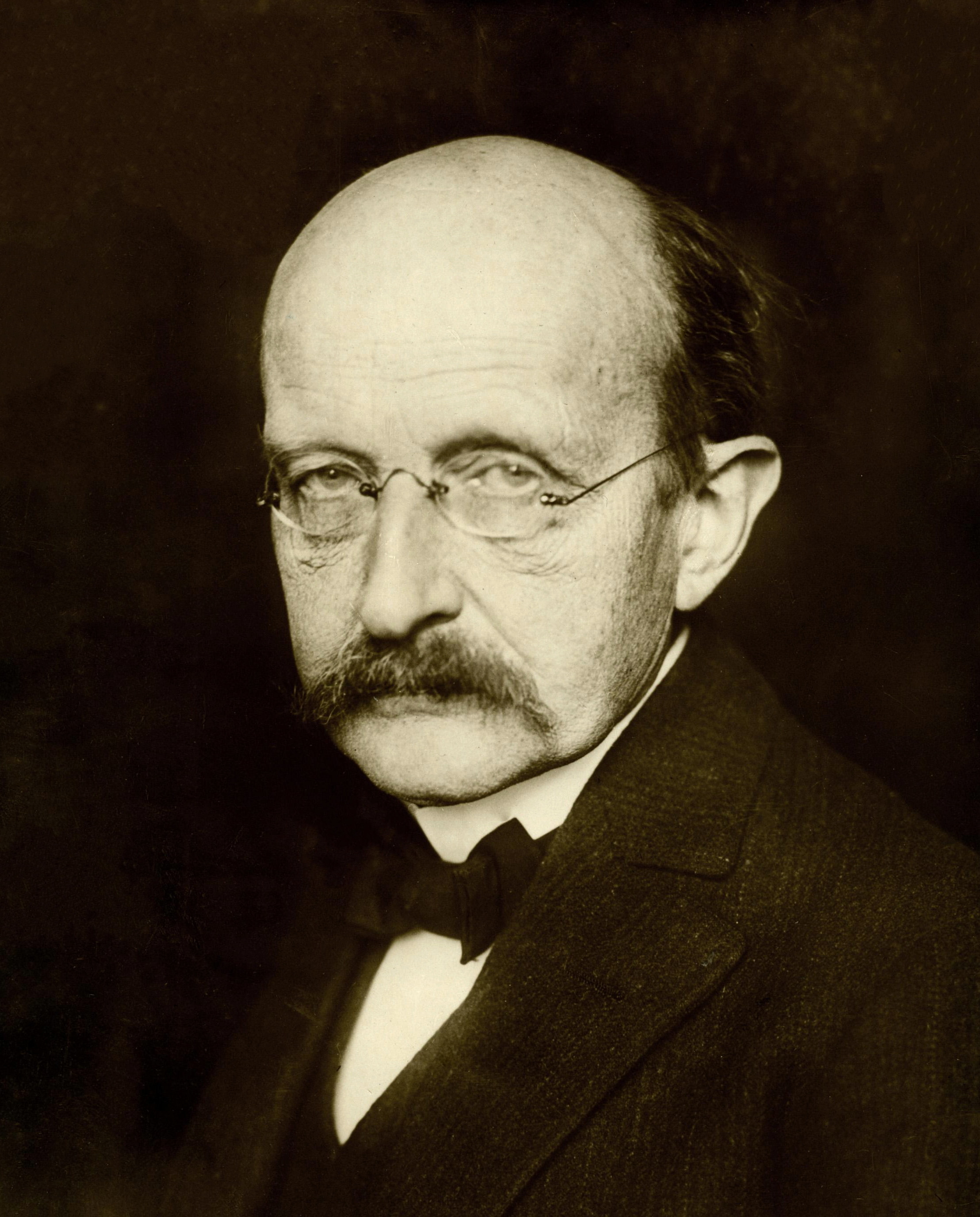©Fernando Caracena 2013
Things that come in chunks
There are physical objects that come in integral multiples of a least unit. They are said to be quantized. We have that in brick buildings, where a large wall can consist of a whole number of small bricks; except that masons can break bricks in half. In physics, quantized objects come only in integral multiples—no half units allowed.

Fig. 1. Max Planck, the discoverer of quantum properties of light (from the Commons, click on image).
Electric charge comes in equal sized chunks. Elementary charge exists both as positive and negative units of electronic charge(e). The electron carried one elementary unit of negative charge (-e). The proton of the atomic nucleus carries a positive unit of elementary charge (+e). Any positive charge could be expressed as Q = N e, and any negative charge as Q' = N' (-e), where N and N' are integers. In electrostatic experiments N and N' are enormous, so large that adding or subtracting a few units of charge produce imperceptible results. Integers appear in physics in many interesting ways, often expressing an aggregations of quantized units. It turns out that angular momentum is quantized, so that there is a fundamental unit of angular momentum, in terms of which exchanges of angular momentum can happen.
Max Planck a meticulous, conservative theoretical physicists brought about a revolution in physics at the turn of the century 19—20th, which he tried to make go away unsuccessfully. He discovered that light is quantized in units that scale with the frequency of the color of the light. Recall that ordinary, white light from the Sun is a rainbow mixture of colors, which can be separated out by a prism (Fig.2).

Fig. 2. White light is separated into a rainbow of colors by being sent through a prism, in which the speed of light varies with each color so that each beam of color is bent by differnt amounts.From the Wiki Commons by D-Kuru.
Max Planck's big discovery, when doing research on the distribution of the color of light emitted from hot ovens (the Black Body Spectrum), was that the energy of electromagnetic waves is quantized in units (called photons) that are proportional to the frequency (ν) of each spectral component
εν = h ν, (1a)
where the constant of proportionality, h, is called Planck's constant. A beam of light of frequency ν becomes stronger as the number of photons increases
E = n εν . (1b)
Planck himself remained very uncomfortable with his discovery (1a and b); tried to get rid of it by somehow setting h =0; but his constant refused to go away.
Planck's discovery (1a and b) is almost a logical contradiction in itself. We know that light is an electromagnetic wave, that is, it consists of continuous, electric and magnetic fields that fill space and oscillate in patterns analogous with waves that we see on top of bodies of water. A particular color that we see corresponds to a frequency, wavelength and quantum of energy of that light (table 1). In the blog on Electromagnetic Waves (EMW) we showed that the energy density of electromagnetic wave energy is given by
u =½ (B2 +E2 )/μ0 . (EMW.11b)
----------------------------------------------------------------------------------------------------------------------
Table 1
color frequency (ν, 1012 HZ) wavelength (λ, 10-9m) energy of quanta (eV)
violet 668–789 449–380 2.76–3.26
blue 606–668 495–449 2.51–2.76
green 526–606 570–495 2.18–2.51
yellow 508–526 591–570 2.10–2.18
orange 484–508 620–591 2.00–2.10
red 400–484 750–620 1.65–2.00
eV=electron Volts (1eV ≈ 1.6 x 10-16 J)
----------------------------------------------------------------------------------------------------------------------
The big problem that physicists faced as a result of Planck's discovery is reconciling the discreteness of photon energy (1b) with the smoothness of electromagnetic energy density (EMW.11b), which is a mystery that remains with us to this day.
A good video introducing some of the concepts of Quantum Mechanics is available online by a professor from India , here. A TED lecture by Jacob Sherson ("How to become a quantum physicist in five minutes") presents a game that he developed, which allows you to participate in high levels of Quantum Mechanical research.
